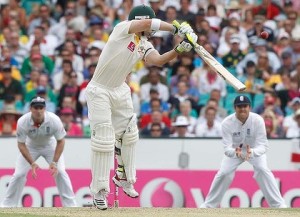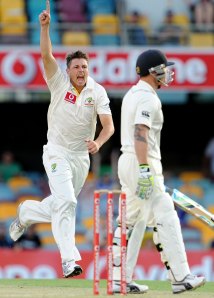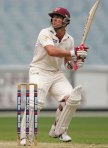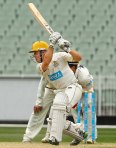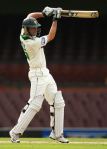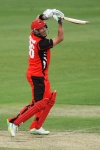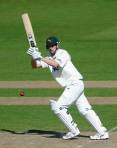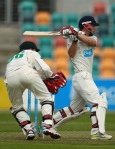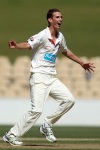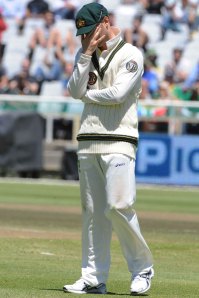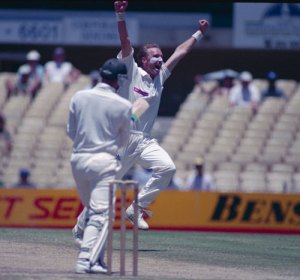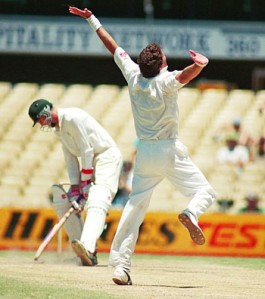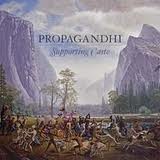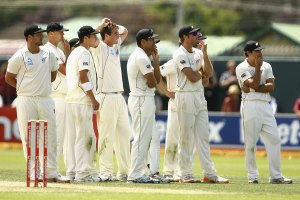
New Zealand's planning and execution on the 4th day in Hobart was first class, and deserved more focus from the Australian media.
Ross Taylor’s captaincy on the fourth day in Hobart was supreme; his situational field placements were first class, and the awareness he displayed in recognising what was working, and what was not, assured that his decision making played a significant role in the New Zealand victory.
Just before lunch on the final day Warner and Ponting had seen Australia close to within 81 runs of the target in accumulating a 37 run partnership and if the home side went to lunch only three down then the situation would have been very difficult for the New Zealanders. However the screws had begun to be applied by Taylor and his bowlers; Ponting’s runs had dried up thanks to an immaculate line and length and he had edged through slips and survived a very close l.b.w decision in the overs leading up to his dismissal. So with overcast conditions assisting movement through the air Taylor threw the ball to Doug Bracewell, who dragged a shot out of Ponting that made him look like he was an old man participating in a young man’s sport. A strange back foot drive to a ball on a length, he managed to only spoon the ball to cover and New Zealand knew that they were in with a sniff thanks to the brittle middle order batting that the Australians are capable of these days. Bracewell’s next over saw him persisting with what is becoming de rigueur for opponents against the Australians, middle and off line with movement away, Clarke obliged by going hard at the ball early in his innings and by the end of the over Hussey had departed as well. Haddin was the next to perish via the extravagant drive, having survived an edge through slips the ball before, the Australian keeper edged to slip off Southee and the Black Caps had only to get through the tail. A quick aside on the wicketkeepers dismissal; all the focus has been on Phil Hughes and the regularity in which he finds himself nicking the ball into the cordon but criticism must be also levelled at Haddin who‘s is failing to adapt his technique and method of scoring to the situation at hand. His inability to put away the big flashy off drive has seen the New South Welshman regularly caught behind the wicket and for me is a massive concern for a side that needs runs out of the late middle order/tailenders more than ever. Bracewell and Southee persisted with getting the ball into a corridor in which late order batsman seemed to find their bats mystically drawn towards the ball; Siddle and Pattinson came and went quickly with the bats dangling meekly away from their bodies and provided the vacuum like slips cordon with two more catches for the match. Doug Bracewell then sealed the victory by bowling both Mitchell Starc and Nathn Lyon; New Zealand achieving their first victory on Australian soil since 1993.
All the plaudits after the game revolved around Bracewell’s effort with the ball and Warners performance in carrying his bat for 122 not out. However Taylor’s manipulation of his bowling attack and the subtle situational field placements cannot be underestimated; Warners wagon wheel is notable for the amount of singles from point through to cover as Taylor recognised that the opener was not going to flash outside off, his bowlers then dragged their length back two or three feet and moved the line so the ball started on off stump. Warner was happy to play the short arm jab out to the sweeper regularly (almost half his runs came in this area) but this only served to bring batsman on strike that were more likely to go hard at the full ball outside off. It is perhaps the biggest indicator that opposition sides no longer fear Ricky Ponting when during their partnership the New Zealanders were happy to give Warner the easy single then tighten the field and line to the former captain; the tactic worked, Ponting found runs hard to come by leading up to his departure and in the end his strange dismissal was a product of a declining skill set, fantastic bowling and a captain demonstrating a superb situational cricketing brain. Praise of course must also be given to the Black Caps attack that were able to compliment Taylor’s excellent positioning of the field by getting the ball into the correct areas thus allowing the batsmen to rarely play shots to a vacant area of the ground. Bracewell was the star of the show taking six wickets but Chris Martin also did a job, picking up Phil Hughes and only going for 2.75 runs an over in the second innings. Also the catching form of the slips fielders cannot be underestimated, Ross Taylors catch off Usman Khwaje, with Guptil diving in front of him, was the standout but the New Zealanders did not miss a chance and must be commended for not letting the batting side get off lightly for their aggressive strokeplay.
So credit where credit is due; yes the Australians definitely have problems against the moving ball, yes the conditions in Hobart were not unlike those you would find in New Zealand and were perfectly suited to the four seam attack that the Black Caps selected. But on the last day I saw a team that went out to execute a plan and they executed perfectly; they had obviously studied the Australian bats and implemented a plan that nullified the batting order. Taylor also was flexible in his tactics and adjusted them when he realised that Warner was unlikely to throw his wicket away. It was beautiful to watch and Ross Taylor and his team should be receiving a greater amount of praise for their performance.
